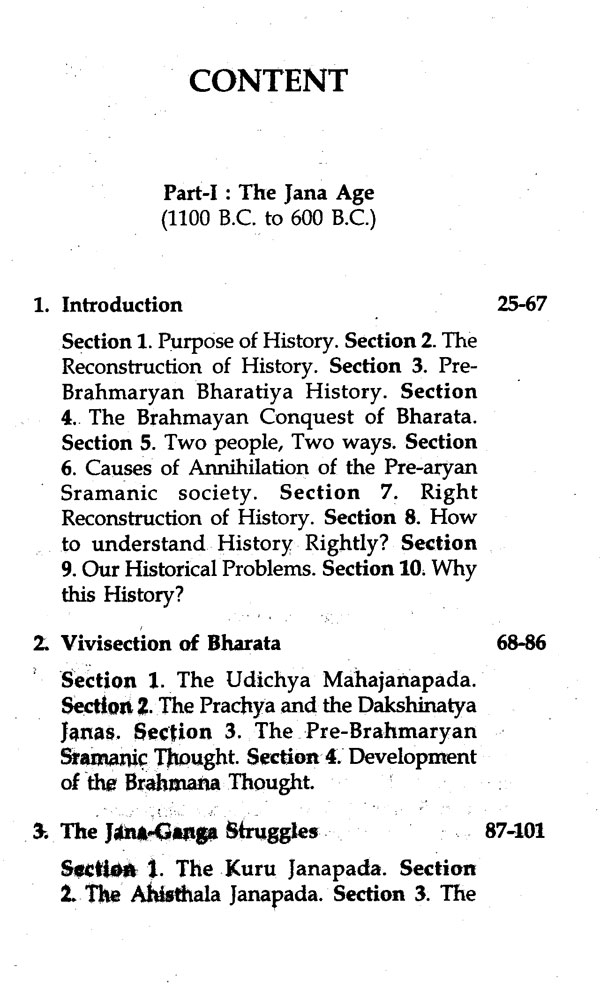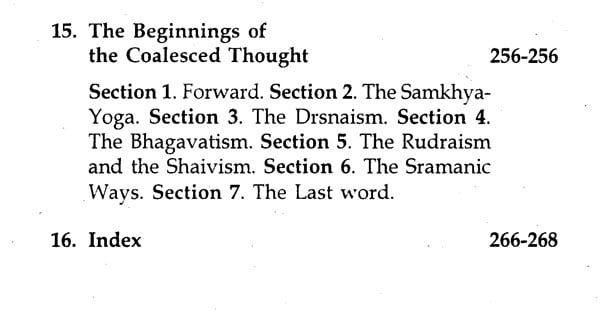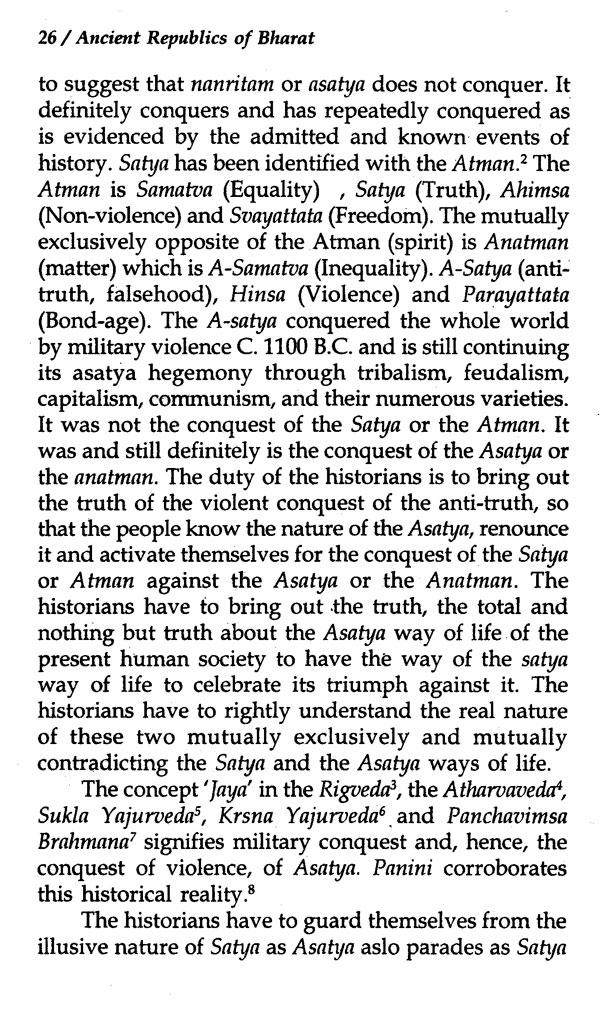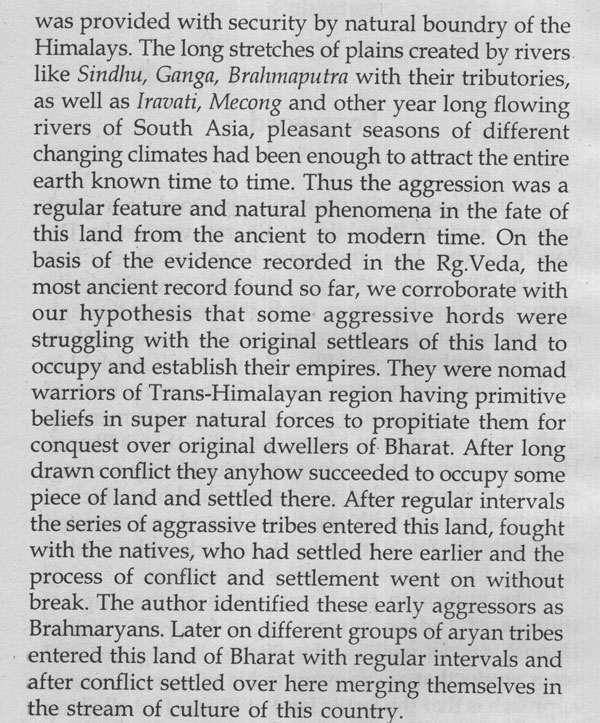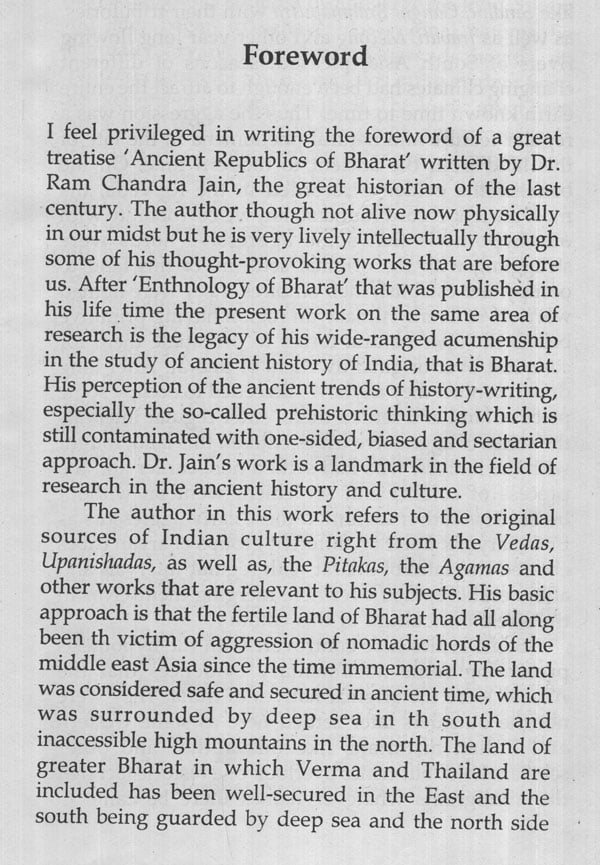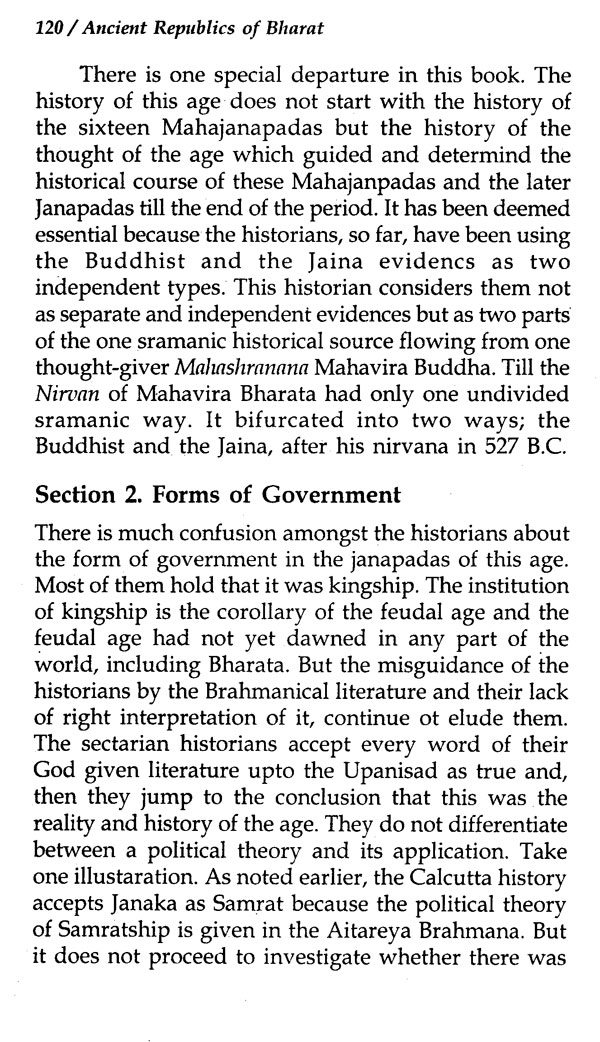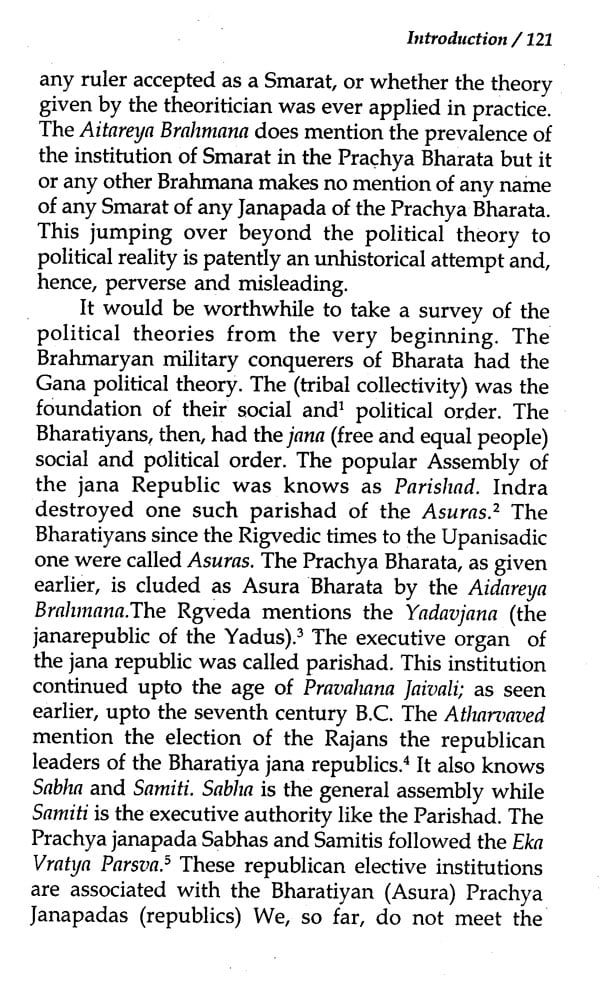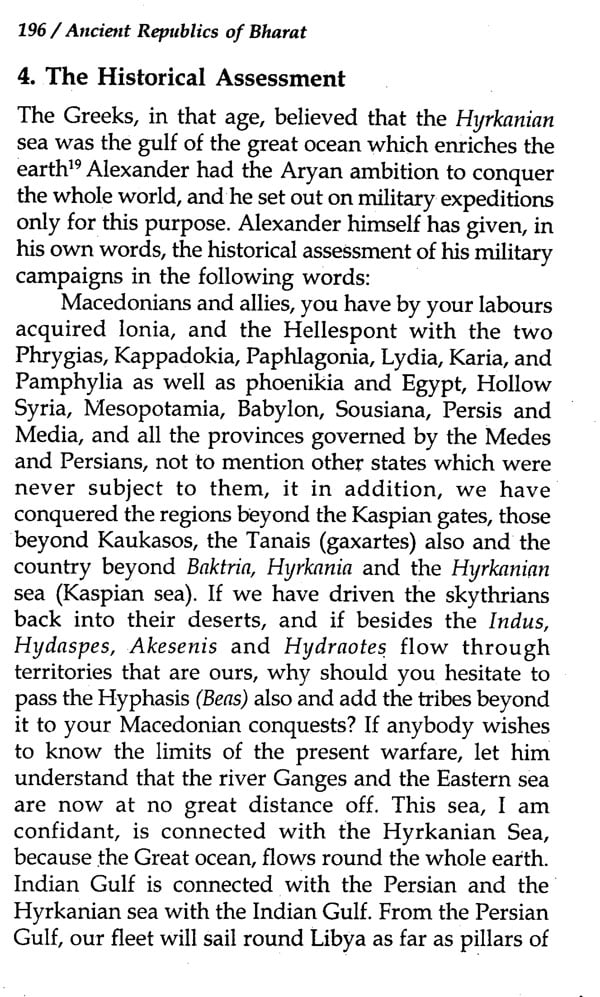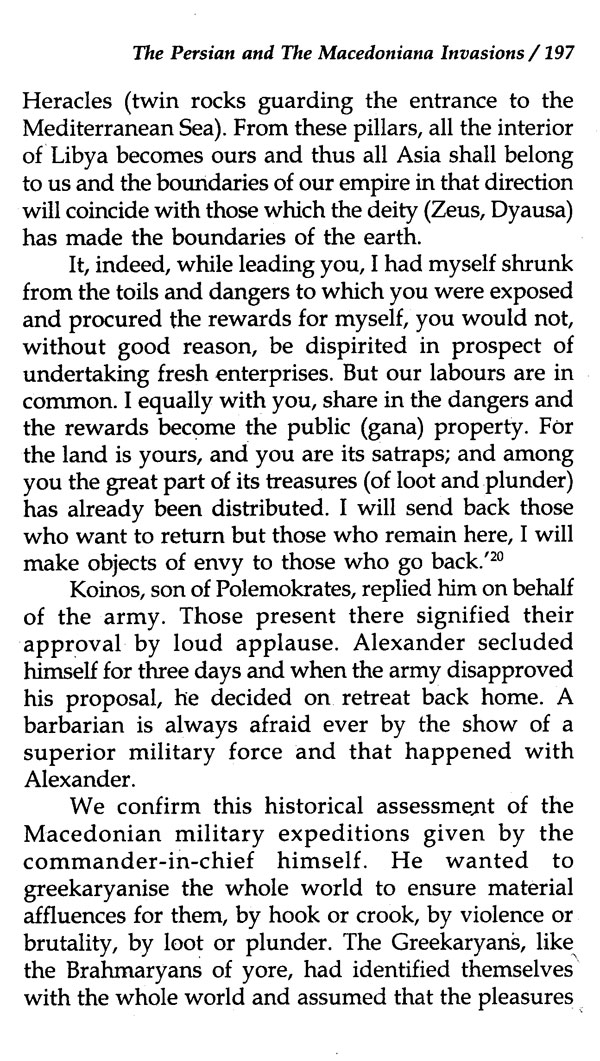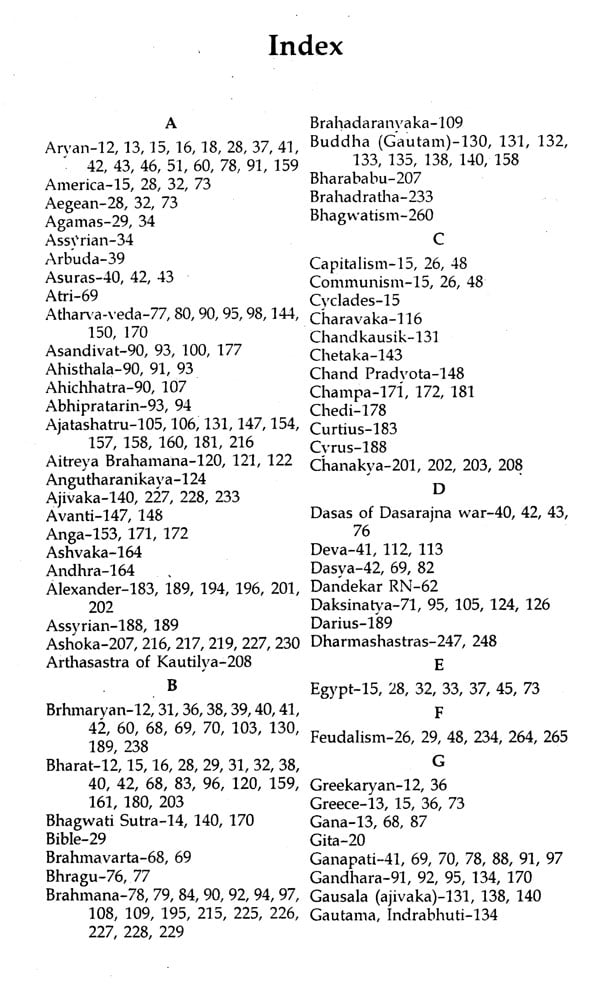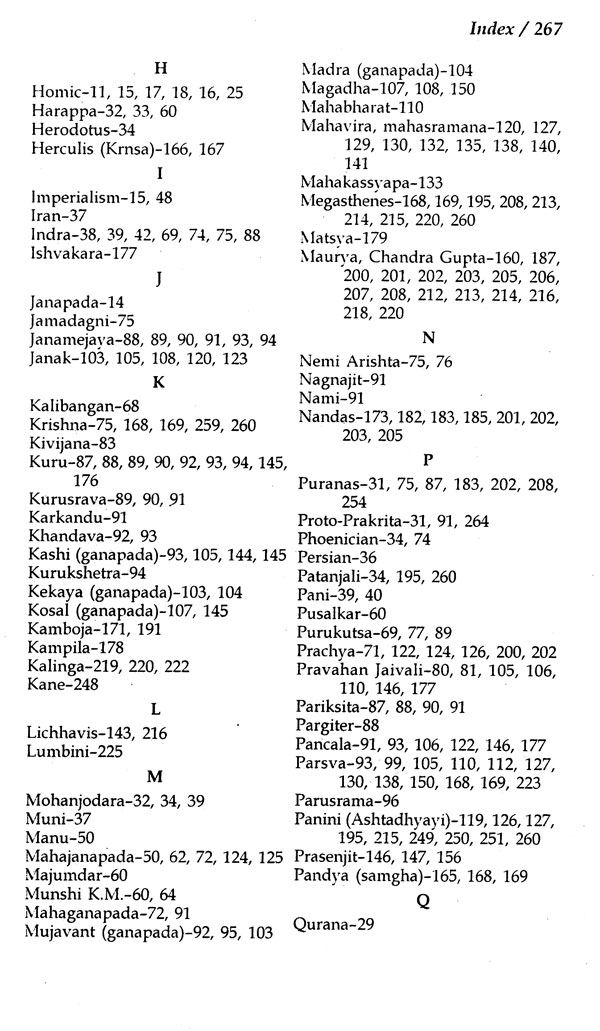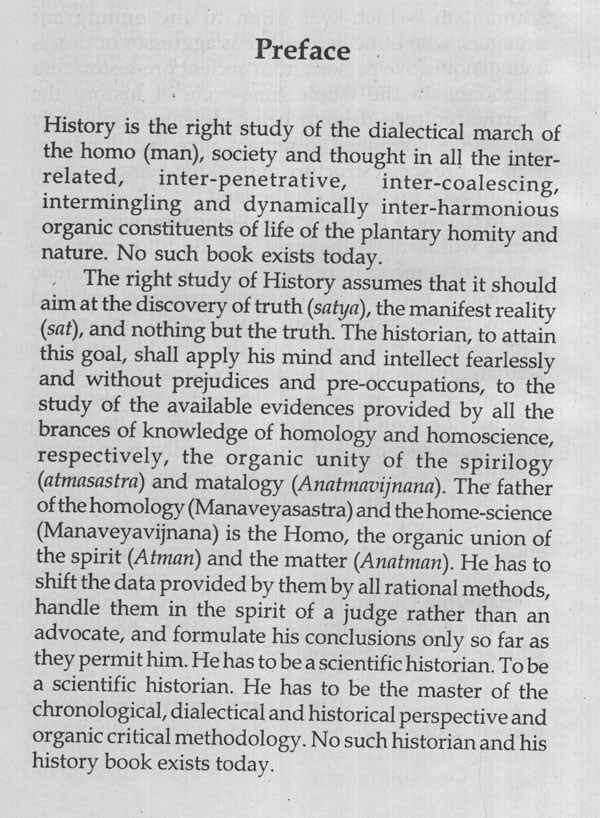
Ancient Republic of Bharat
Book Specification
| Item Code: | NAW296 |
| Author: | R.C Jain and Ashok Sahajanand |
| Publisher: | Research Books, Delhi |
| Language: | English |
| Edition: | 2003 |
| ISBN: | 8185781885 |
| Pages: | 276 |
| Cover: | HARDCOVER |
| Other Details | 9.00 X 5.80 inch |
| Weight | 400 gm |
Book Description
This work is a landmark in the field of research in the ancient history and culture, which is still contaminated with one-sided, biased and sectarian approach.
The author in this work refers to the original sources of Indian culture right from Vedas, upanishadas, as well as, the Pitakas. the Agamas etc. His basic approach is that the fertile land of Bharat had all along been the victim of aggression of nowadic hords of the middle east Asia since the time immemorial. The land was considered safe and secured in ancient time which was surrounded by deep sea in the south and in accessible high mountains in the north.
Born on 19 February 1946, Ashok Sahajananda spend early years of his life in Meerut, an important town of Western U.P. (India). His parents Late Shri Sumati Pd. Jain and Smt. Kela Devi Jain deeply religious and pious people, have left an indelibly impression on his mind. As a child he V, as exposed to an environment of high standards of morality, ethical values and profound spirituality.
He completed his education from Bombay, Osmania and Anamalai University. He studied Jainism in the keen observation of great Jain scholar-monk Slid Sahajanand Varni, who was his spiritual teacher also.
He is a renowned educationist and journalist. He has contributed more than 100 research articles, published in reputed journals. He also compiled & edited many books on Indology. He is founder-editor of Sahaj-Anand, Nansayar (Quarterly) and Aapki Samasyaa-Hamara Samadhan (Monthly). Presently he is the editor of `Mystic-India' magazine. Chairman of Swati Academy, an organisation associated with research works on Ancient Indian Sciences.
I feel privileged in writing the foreword of a great treatise 'Ancient Republics of Bharat' written by Dr. Ram Chandra Jain, the great historian of the last century. The author though not alive now physically in our midst but he is very lively intellectually through some of his thought-provoking works that are before us. After 'Enthnology of Bharat' that was published in his life time the present work on the same area of research is the legacy of his wide-ranged acumenship in the study of ancient history of India, that is Bharat. His perception of the ancient trends of history-writing, especially the so-called prehistoric thinking which is still contaminated with one-sided, biased and sectarian approach. Dr. Jain's work is a landmark in the field of research in the ancient history and culture.
The author in this work refers to the original sources of Indian culture right from the Vedas, Upanishadas, as well as, the Pitakas, the Agamas and other works that are relevant to his subjects. His basic approach is that the fertile land of Bharat had all along been th victim of aggression of nomadic hords of the middle east Asia since the time immemorial. The land was considered safe and secured in ancient time, which was surrounded by deep sea in th south and inaccessible high mountains in the north. The land of greater Bharat in which Verma and Thailand are included has been well-secured in the East and the south being guarded by deep sea and the north side was provided with security by natural boundry of the Himalays. The long stretches of plains created by rivers like Sindhu, Gangs, Brahmaputra with their tributories, as well as Iravati, Mecong and other year long flowing rivers of South Asia, pleasant seasons of different changing climates had been enough to attract the entire earth known time to time. Thus the aggression was a regular feature and natural phenomena in the fate of this land from the ancient to modern time. On the basis of the evidence recorded in the Rg.Veda, the most ancient record found so far, we corroborate with our hypothesis that some aggressive hords were struggling with the original settlears of this land to occupy and establish their empires. They were nomad warriors of Trans-Himalayan region having primitive beliefs in super natural forces to propitiate them for conquest over original dwellers of Bharat. After long drawn conflict they anyhow succeeded to occupy some piece of land and settled there. After regular intervals the series of aggrassive tribes entered this land, fought with the natives, who had settled here earlier and the process of conflict and settlement went on without break. The author identified these early aggressors as Brahmaryans. Later on different groups of aryan tribes entered this land of Bharat with regular intervals and after conflict settled over here merging themselves in the stream of culture of this country.
History is the right study of the dialectical march of the homo (man), society and thought in all the inter-related, inter-penetrative, inter-coalescing, intermingling and dynamically inter-harmonious organic constituents of life of the plantary homity and nature. No such book exists today.
The right study of History assumes that it should aim at the discovery of truth (satya), the manifest reality (sat), and nothing but the truth. The historian, to attain this goal, shall apply his mind and intellect fearlessly and without prejudices and pre-occupations, to the study of the available evidences provided by all the brances of knowledge of homology and homoscience, respectively, the organic unity of the spirilogy (atmasastra) and matalogy (Anatmavijnana). The father of the homology (Manaveyasastra) and the home-science (Manaveyavijnana) is the Homo, the organic union of the spirit (Atman) and the matter (Anatman). He has to shift the data provided by them by all rational methods, handle them in the spirit of a judge rather than an advocate, and formulate his conclusions only so far as they permit him. He has to be a scientific historian. To be a scientific historian. He has to be the master of the chronological, dialectical and historical perspective and organic critical methodology. No such historian and his history book exists today.
**Contents and Sample Pages**
